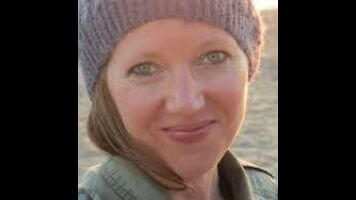The Argonauts interrogates identity in a smart blend of theory and story

I knew the myth about Jason and the Argonauts and their quest for the Golden Fleece, but I didn’t know anything about the Argo, their ship, and I never would have thought of it as a metaphor through which to explore love. But Maggie Nelson’s memoir The Argonauts is full of such surprises—a fluid mix of autobiographical writing and critical theory that uses each to think about the other. The book opens with a scene of Nelson blurting out “I love you” to an as-yet-unidentified “you” while having sex on a cement floor. Two pages later she brings in Roland Barthes, who describes:
how the subject who utters the phrase “I love you” is like “the Argonaut renewing his ship during its voyage without changing its name.” Just as the Argo’s parts may be replaced over time but the boat is still called the Argo, whenever the lover utters the phrase “I love you,” its meaning must be renewed by each use, as “the very task of love and love language is to give to one and the same phrase inflections which will be forever new.”
These passages that invoke theory are dense but short—and nearly always followed by a firm grounding in Nelson’s experience. She writes that “a day or two after [her] love pronouncement, now feral with vulnerability,” she sent her lover that bit of Barthes. “I thought the passage was romantic,” she writes. “You read it as a possible retraction. In retrospect, I guess it was both.”
The “you” is slowly revealed to be a person who doesn’t have an easy pronoun attached—no he, no she—and Nelson’s friend turns to Google to find out. (John Waters is quoted as saying, “She’s very handsome,” but Nelson protests, “That was years ago … Things might have changed.” And they have.) Nelson finally settles on “he” and the he in question turns out to be the artist Harry Dodge. After falling sharply in love and marrying just before Proposition 8 passed (temporarily banning gay marriage in California), Nelson becomes a stepmother to Harry’s 3-year-old son and then begins her quest to have a child of their own.
References to the Argo echo through the book like a refrain, reminding us that its inhabitants—the writer, her partner, her son and stepson—are a family, a family who loves each other, no matter what names may be applied to their shifting shapes. As in any family, there are tensions. Nelson values words and their meaning while Dodge is suspicious of them. Dodge values privacy while Nelson writes publicly about them: He tells her on more than one occasion that “being with [her] is like an epileptic with a pacemaker being married to a strobe light artist.”
Details of their private and at times mundane life become ways of questioning heteronormativity, such as when Nelson pulls out the Snapfish mug her mother made for her—emblazoned with a photo of her (seven months pregnant), Harry, and their stepson all dressed up to go see The Nutcracker at Chirstmastime—and wonders how her queer family fits in with her larger family’s traditions. Or when a worker at a pumpkin patch, where the family has been choosing pumpkins for Halloween, mistakenly assumes that Dodge’s credit card, presumably with the first name “Harriet,” is Nelson’s. “We just froze the way we freeze until Harry said, ‘It’s my card.’ Long pause, sidelong stare. A shadow of violence usually drifts over the scene. ‘It’s complicated,’ Harry finally said, puncturing the silence.” But in this case there is no violence. The man surprises: “‘No, actually, it’s not,’ he said, handing back the card. ‘Not complicated at all.’” In many ways, he’s right. But Nelson is an Argonaut, fearless in her quest to understand and explain (primarily to herself) the life she has chosen to live with all its complexities and its ever-shifting terms.
To help both explore and explain, Nelson pulls in quotes from thinkers as diverse as Pema Chödrön (a Tibetan Buddhist nun), Leo Bersani (author of, among other things, Is The Rectum A Grave?), queer theorist Eve Kosofsky Sedgwick, and transcendental essayist Ralph Waldo Emerson. These quotes are integrated seamlessly into the text, set apart only by italics and with the author’s name printed very small in the margins. Even Nelson’s quoting practices are non-binary and inclusive, and this makes for an absorptive reading experience where lines of both thought and story are followed without pause or interruption.
Like the Argo, this book keeps building on itself with stories of sexual and intellectual and maternal passion, the conception and birth of Nelson’s son, and the decline and death of Dodge’s mother. There’s gender fluidity, bodily fluids, the fluid nature of language, the ebb and flow of life and death. But at its center is always love, its meaning ever renewed, from its first utterance on a cold cement floor to the last, which, in this ongoing narrative, still has yet to be said.